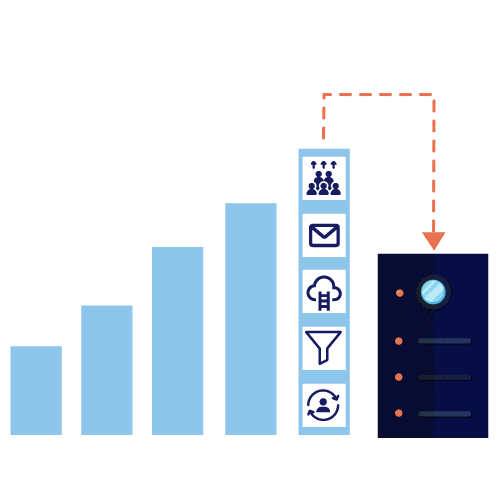Unlimited Data.
Infinite Possibilities.
Looking for B2B data? Download Unlimited data using our Chrome extension at just $79/month.
Correct application of segmentation to a company’s respective email list allows a business to retain its loyal subscribers. After all, who would want to receive content that’s not appropriately tailored for them?
The answer. No one.
In fact, the chance of losing your sway over your faithful subscribers increases significantly when they are sent content that’s irrelevant to them.
And no marketing department wants that now, do they?
Unsub rates are 9.37% lower than non-segmented marketing campaigns. (MailChimp)
A study found that 77% of ROI comes from segmented, triggered and targeted email marketing campaigns (DMA National Client Email Report 2015)
So, segmentation of an email database is essential, to say the least. Let’s take a look at

It’s probably the simplest form of email list segmentation that a business can apply to its email database. Not only will it make the content being shared more relevant but it will keep your subscriber engagement high.
For example:


So, a segmented email list makes all the sense in the world.

That may not seem like much but it is.
For example:



Another way to build a segmented email list is by weighing-in a customer’s lead score.
For example:

This will allow you to target your customer with precision and lets your marketing strategy be most effective.

Utilizing a person’s past purchase history is an effective way to constantly engage your customer’s attention through relevant email list marketing efforts.
For example:

So it would make sense to measure your marketing efforts based on a customer’s past purchase history.


Is nothing but dividing your market into segments based on a customer’s personal traits, attitudes, values, interests, and lifestyles.
For example:

By effectively segmenting your email list, you give yourself the best possible edge when it comes to developing an effective marketing strategy that will see your business grow by leaps and bounds.

Author
A content curator who focuses on start-ups B2B marketing platforms.
Skills: Writing and proofreading skills, Strategic Planning, Strong Research Expertise, Adaptability, Communicate